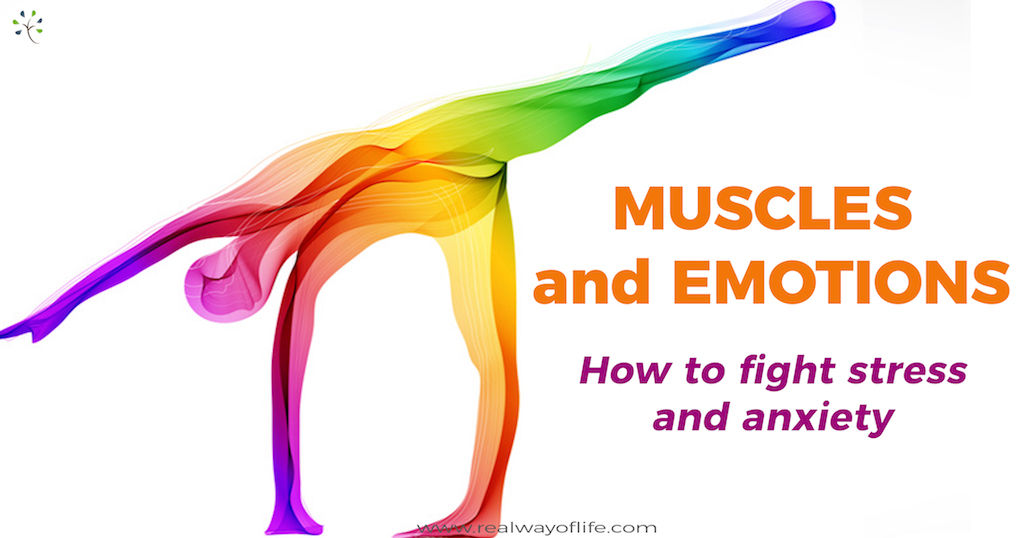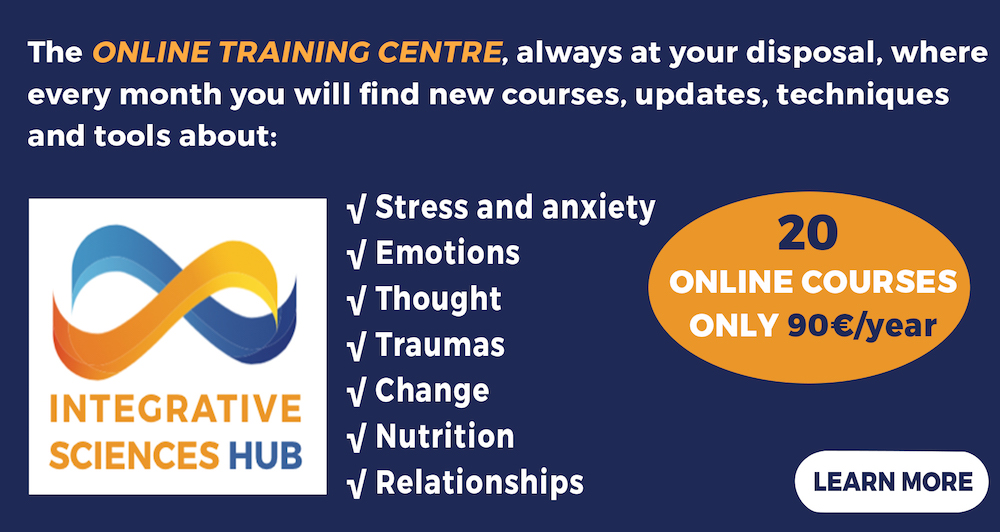
28 Feb Muscles and Emotions: how to fight stress and anxiety [article + two videos]
Emotions and muscle activation (movement, reflexes and posture) are always involved in any danger, adaptation, stress or anxiety response.
The two are closely intertwined, and make connections on several fronts.
For instance, movement is needed to actively avoid or manage a dangerous situation, or actively manage interpersonal relationships.
In each of these cases, whether as a starting point and/or as a consequence, emotions play a key role.
A TWO-WAY DYNAMIC:
Emotions activate the body and movement, while posture and contact trigger emotions.
But there is more than just cause-and-effect to this interaction: there are a number of fine mechanisms of influence and mutual adjustment.
-
EXAMPLE 1: body movements in emotionally intense events trigger activation of both our metabolism (including the metabolic waste “disposal” mechanism), as well as the release of situation-appropriate neurotransmitters.
-
EXAMPLE 2: by contrast, immobility during a traumatic event increases the chances of developing post-traumatic stress disorders (PTSD) or other forms of non-functional adaptation.
-
EXAMPLE 3: we must remember that every time we activate the stress-axis, postural changes occur (borne especially by the diaphragm, shoulders and para-vertebral muscles, and other parts of the body), that are unlikely to easily and automatically return to their initial relaxed state. People who are prone to stress and anxiety are quite familiar with this type of implication.
-
EXAMPLE 4: To make a final example, feelings of self-possession and of self-control are directly influenced by bodily maps developed in the insula cortex by way of the “evaluations” we make on our muscle tone and other sensorial and motor information in the brain stem (especially in the PAG).
WHAT YOU CAN DO
Body movements, especially isometric movements, can be used in a targeted manner to stimulate –with the body as a starting point- a correct physiology of the relation between emotions and muscle activation.
In fact, we often find ourselves in opposite situations of either hyper or hypo–activation of the muscle tone and reactivity, that create dysfunctional circuits. An excess of muscular tension promotes amplified emotional reactions and, in turn, a diminished capacity to self-regulate.
It follows then, that whatever perceptive and emotional evaluation is made, the responses of the body cannot be adequate because they stem from a non-physiological state.
With the right techniques, it is possible to favor the recovery of flexible adaptation patterns, in which emotional and bodily responses work in synergy.
We have developed several techniques to act on these dynamics in a targeted and effective way.
One of these techniques is the Isometric Emotions technique.
Please Note: This is included in the Integrative Sciences HUB, our online platform, offering 24/7 access to practical and effective courses.
Here are two short videos:
- The first is a brief introduction to the fundamentals of the technique
- The second presents a basic method
Should you find some interesting tips to apply to your everyday worklife in these short videos (part of the Isometric Emotions online course), you are invited to learn more about the program by following this link: go the online Isometric Emotions course.
VIDEO 1
VIDEO 2
For further information: visit to the Isometric Emotions ONLINE COURSE program.




